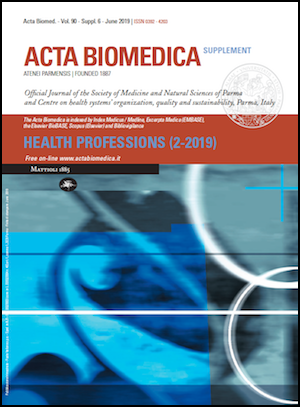The CiTAS scale for evaluating taste alteration induced by chemotherapy: state of the art on its clinical use
Keywords:
Taste alteration, cancer patients, chemotherapy effect, nutrition, CiTAS scale.Abstract
Background: Cancer is the leading cause of death worldwide. Of the various therapeutic approaches, chemotherapy is the most widely used treatment. Among the various side effects associated with this treatment, taste alterations (TAs) have received little attention, even though they have a serious impact on the nutritional aspect and quality of life (QoL) of patients. TAs concern 75% of the patients receiving chemotherapy, and this figure is still considered to be underestimatedbeacuse could be due both to inadequate attention and to the absence of specific subjective tools able to fully evaluate TAs in patients undergoing chemotherapy. Methods: A review by querying CINAHL, PubMed, Scopus and Google Scholar databases about the current status of use of the CiTAS self-evaluation scale, was performed. Results: From critical reading of the selected reports, it can be said that until now CiTAS has not been used to a large extent for evaluating taste, even at a late stage in patients undergoing chemotherapy. However, the results and the selected reports seem to indicate hope for its wider use. Conclusions: In literature, CITAS scale has been used on very heterogeneous populations and not adequately studied in specific care settings, its use within controlled trials could implement its spread.Correct and subjective evaluation of TAs would allow the planning of specific and personalized interventions aimed at providing adequate nutrition to support the maintenance and/or achievement of a correct body mass index. All this could contribute significantly to a better perception of QoL in patients undergoing chemotherapy.
Downloads
Published
Issue
Section
License
This is an Open Access article distributed under the terms of the Creative Commons Attribution License (https://creativecommons.org/licenses/by-nc/4.0) which permits unrestricted use, distribution, and reproduction in any medium, provided the original work is properly cited.
Transfer of Copyright and Permission to Reproduce Parts of Published Papers.
Authors retain the copyright for their published work. No formal permission will be required to reproduce parts (tables or illustrations) of published papers, provided the source is quoted appropriately and reproduction has no commercial intent. Reproductions with commercial intent will require written permission and payment of royalties.






